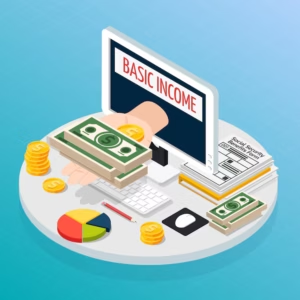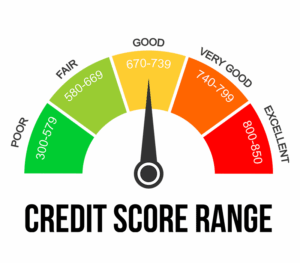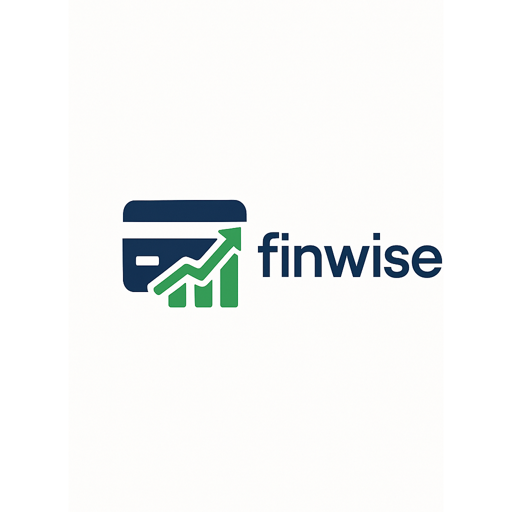Creating a Passive Income Portfolio: The 4 Best Strategies for 2025
In 2025, financial independence is not some wildly unattainable dream — in fact, it’s a practical goal that people are achieving. If the goal is to increase your income, accelerate early retirement, or just have greater financial freedom every day, creating a passive income portfolio isn’t just an optimal path, but it’s also one of the smartest moves you can make. But where do you start?

This blueprint dissects the best focus methods for generating passive income in 2025, enabling you to build a diversified portfolio that suits your needs — and it can work while you sleep.
What Is Passive Income?
Passive income is the money earned while consuming low effort to maintain it. Passive income, on the other hand — such as investment (rents) passive income — keeps raking in revenue even after you’ve finished the work once.
Some common examples include:
Dividend-paying stocks
Rental income from real estate
Book, course or music royalties
Interest earned on high-yielding accounts or bonds
Income on digital products or websites
A well-constructed passive income portfolio pools different sources of passive income to spread the risk and achieve diversified and steady returns.
Why Passive Income is Important in 2025
In the face of inflation, uncertain job markets, and fluctuating interest rates it’s risky to depend on a 9-to-5 paycheck. The world economy is in flux, and for Americans, there’s a heightened awareness of the importance of financial resilience.
Building a passive income portfolio in 2025 isn’t just smart financial planning — it’s an imperative.
Step 1: Establish Passive Income Goals
Before you begin investing, what does passive income look like for you:
Are you looking for an extra $500 a month to help with bills?
You want to quit your full-time job?
Do you have a horizon of 10–20 years in relation to retirement income?
Understanding your objectives will help you figure out what to invest in and how much risk is tolerable.
Assess Your Starting Capital and Risk Tolerance
Many passive income streams will require an investment up front, though not all. Take stock of:
Your current savings
Access to capital (eg, home equity, loans)
Risk appetite (low, medium, high)
Low-risk, lower-return assets may be more appropriate if you’re just starting out. If you have experience — or extra cash to spare — you may want to consider more aggressive strategies.
3: Diversify Your Income Sources
And that leads me to point 3….
The secret to a great passive income portfolio is: diversification. Here are some of the best-performing strategies in 2025:
Dividend Stocks and ETFs
For the latter, dividend-paying stocks continue to stand as one of the best options in hands-off income. In 2025, look for:
Dividend Aristocrats: Businesses that have hiked dividends 25 or more consecutive years
High-dividend ETFs: Examples SCHD or VYM as a way to protect it with diversified exposure
Pro tip: Reinvest dividends early in the game to turbocharge compounding, and switch to taking cash payouts when income is more important.
Real Estate Crowdfunding & REITs
Real estate is back as a desirable investment and with good reason, even during the pandemic: In most markets, housing prices have at least held steady since last March. But buying property isn’t the only way to invest in real estate.
Instead, consider:
REITs (Real Estate Investment Trusts): High-yield and publicly traded
Real estate crowdfunding platforms (ex: Fundrise, RealtyMogul): Start investing in property portfolios for as little as $10–$1,000
Either way, you receive exposure to real estate without having to deal with tenants and properties.
High-Yield Savings and Treasury Bonds
With interest rates not quite back to historic lows, so-called high-yield savings accounts and I-Bonds or T-Bills are getting new enthusiasm.
They offer:
Predictable income
Low risk
Liquidity (in many cases)
For conservative investors or short-term cash cushions.
Digital Products & Online Royalties
It’s 2025, and the creator economy is in full swing. If you’re a writer, designer or teacher, for example, you can make money on:
E-books
Online courses (courses available through platforms like Teachable or Udemy)
Print-on-demand stores
YouTube ad revenue
Affiliate marketing
Sure, there is some labor involved up front, but once it’s all said and done (which isn’t much), these income streams can be profitable.
Automated Businesses or Niche Websites
Purchasing, purchasing or creating a content website, newsletter or dropshipping shop can provide passive income through:
Ads through a display (such as Google AdSense or Mediavine)
Affiliate programs (Amazon, ShareASale, etc.)
Subscription models
Other investors are snapping up ready-to-go online properties on marketplaces like Flippa or MicroAcquire.
Step 4: Automate and Watch Your Portfolio’s Progressed
Become Friendly with the concept of your financial independence autopilot.
And once you set up your streams, automation is key. Use tools like:
Personal Capital or Empower for net worth tracking
M1 finance vs Fidelity auto investing
QuickBooks or FreshBooks for income and expense tracking (especially if you are a small business on the side)
Implement quarterly reviews of performance, rebalancing investments and accommodating economic changes.
Step 5: Reinvest and Scale
Re-investing early returns can accelerate your passive income. For example:
Reinvest dividends to purchase additional stock
Pour rental proceeds into new properties or REITs
Reinvest online royalties back into paid traffic or scaling content
Your portfolio should expand on its own, with diminishing input and increasing output.
Common Mistakes to Avoid
So as noble as some intentions might be, passive income portfolios can still lead to disappointment. Watch out for:
Excessive leverage: Don’t borrow too much money to chase returns
Lack of diversification: One income stream = one failure point
Ignoring taxes: Can’t ignore passive income, it’s still taxable—know your obligations
False sense of speed: There is no shortcut to this game, it’s a marathon.
Strive to be consistent over the long term and avoid the get-rich-overnight myth.
Final Thoughts
Passive income is not magic — though it can be magically powerful. With the right tactics, tools and attitudes in place, you can start having money work for you — no matter if you’re on vacation, at your 9-to-5 job or living out early retirement.
Begin today, even if it’s one small thing. The more years your money has to work for you, the sooner you’ll reach financial freedom in 2025 and beyond.
Our Post

High Interest Rates, Credit Cards and the U.S. Consumer: What to Know in 2025
The Note: How Decelerating U.S. Economic Growth Affects Using Consumer Credit



Good luck
Thanks for the opportunity